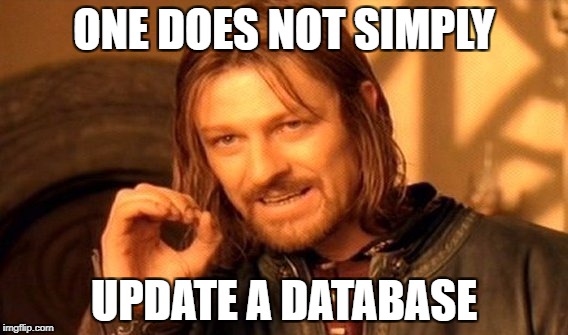
I already described in a previous post why databases are different to applications from a development perspective. The most impactful difference in my opinion is, that you can deploy applications by state. You pick a certain point in your version control system, build your application and have a certain state of your application at hand.
Best case, this state is backed by a number of self-tests and has a unique version number (well, it has one by the hash of your specific commit). You take that build and can deploy it, no matter if your customer had a different version (state) of your application installed or not.
Of course this is simplified, there might be external APIs, libraries, configuration files or – who had thought – databases which prevent you from easily switching application states, but normally such constraints are relatively few.
Databases are different. You can’t preserve state in a database once it’s shipped to a customer. The moment you give it out of your hands, a database starts to change its state continuously. You cannot simply “install” a new version of your database schema on a customer database – there’s data to be preserved and in most cases it’s not even possible to clearly separate schema and data.
And yes, data changes for applications, too, but in my experience database schema is usually much tighter coupled to the data than applications are (which makes sense, doesn’t it?).
So, how do we overcome these difficulties, especially if we are aiming towards frequent releases and agile, collaborative development? Continue reading